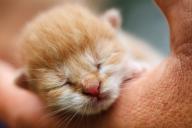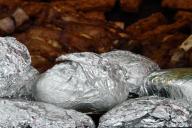Some animals can survive cold months, but still prefer warmer ones – it's pretty normal for most kinds.
Meanwhile, there are also animals who always live in cold climates and are perfectly adapted to withstand even the harshest weather conditions.
Here are a few examples of these animals.

Polar Bears
Polar bears are well-equipped for cold weather.
They have a thick layer of fat called blubber, which helps them stay warm.
Their fur is also dense and water-repellent, providing insulation and keeping them dry.
Arctic Foxes
Arctic foxes have thick fur that changes color with the seasons, helping them camouflage in their snowy surroundings.
They also have furry paws that act like natural snowshoes, allowing them to walk on snow without sinking.
Snowy Owls
Snowy owls have thick feathers that protect them from the cold.
These feathers cover their entire body, including their legs and feet.
Their feathers are also layered, providing excellent insulation.
Musk Oxen
Musk oxen have long, shaggy hair that keeps them warm in freezing temperatures.
They form tight groups, huddling together to conserve body heat.
This cooperative behavior helps them withstand the cold.
Reindeer/Caribou
Reindeer, also known as caribou, have a thick coat of fur that traps air, providing insulation.
They can also dig through snow to find vegetation to eat when other food sources are scarce.
Emperor Penguins
Emperor penguins are built to withstand extremely cold temperatures in Antarctica.
They have a layer of fat to insulate their bodies and dense feathers that provide excellent waterproofing and insulation.
Mountain Goats
Mountain goats are adapted to live in cold and mountainous regions.
Their thick, woolly coats keep them warm, and their hooves have sharp edges that help them grip icy surfaces.
Harp Seals
Harp seals have a thick layer of blubber, which acts as insulation and provides buoyancy in icy waters.
They also have a dense coat of fur that helps keep them warm in frigid conditions.
Previously, we talked about animals that change color in winter.













